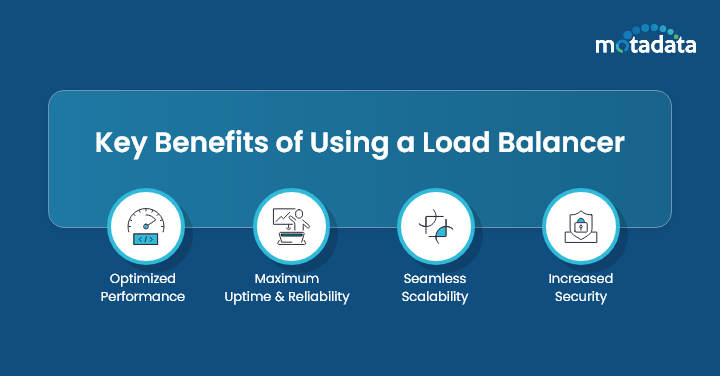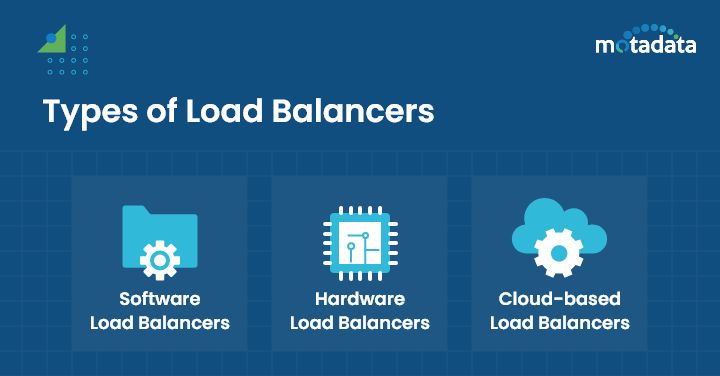Today, almost every other business has moved online to sell their services and products at a large scale.
As per Forbes report, around 66% of businesses have set up their online stores to increase sales and reach.
Now, let’s say, you are one of them and run an online clothing store. To increase your brand visibility or make your customers happy, you decide to run a 50% sale on most of your products.
Within a period, a large group of customers eager to shop from your store interact with the website but all of a sudden, your website crashes.
Well! It can be due to various reasons, such as heavy incoming internet traffic, server failure, or any other fault, leaving potential customers frustrated.
In most cases, the real reason for fallout is the volume of traffic on the website. This incident can result in severe financial losses, missed revenue, damage to the brand reputation as well as unsatisfied customers.
However, there is a ray of hope that can keep your business safe even in the most demanding conditions, i.e., using load balancers.
Load Balancers automatically distribute all the incoming traffic among different servers, guaranteeing that your website stays responsive and stable even under the most demanding situations.
The solution ensures that your overall workload is not concentrated on individual servers but on multiple servers, thus preventing website crashes.
Let us dig deeper into load balancing, how it works, and its key benefits.
Further, we will discuss the different types of load balancers you can choose from and the best practices to follow for implementing a load balancer.
What is a Load Balancer and How Does it Work?
A load balancer is software that helps distribute all the incoming network traffic in a balanced manner across different servers for smooth functioning.
It ensures that there is not too much demand or overloading on a single server. Just like a traffic controller’s role is to direct cars and taxis into different lanes as per the traffic signals, similar is the role of a load balancer.
The load balancers act as traffic managers and balance the workload across different servers, virtual machines, and systems based on the condition.
As and when a client makes or sends a request to use an application, the request is first received by the load balancer that evaluates the status of each server and selects the one that fits best and can handle the incoming request.
After choosing the server, the load balancing device forwards the request to the server for processing and responds back to the client accordingly.
The load balancer determines the right server based on several factors, including the current load, the health of the available servers, and configuration settings.
In short, load balancers maximize your resource efficiency by spreading traffic equally across different data centers and servers.
Further, it prevents every single server from becoming a performance bottleneck.
Key Benefits of Using a Load Balancer
Here are some of the key benefits of using load balancers for business applications, including:
1. Optimized Performance:
During the time of sales or product launch, most web applications receive heavy traffic to their portal that can crash the website, resulting in productivity loss.
By implementing load balancers, all the traffic gets evenly distributed across backend servers, thus ensuring that all resources are utilized efficiently.
Also, it prevents a single server from getting overloaded/crashed and delivers faster response time.
2. Maximum Uptime and Reliability:
Every time a client sends a request to the application, load balancers track the particular server’s health and status within a network and accordingly forward the traffic.
In the event of a server breakdown or outage, these load balancers based on their constant monitoring report automatically reroute traffic to a healthy server.
This in turn minimizes user disruption and keeps the service available at all times, thus ensuring maximum uptime and reliability for vital applications.
3. Seamless Scalability:
Web applications may scale seamlessly with the help of load balancers, which enable the addition of new servers to the server pool as needed to accommodate spikes in traffic.
Businesses may quickly scale their infrastructure to meet increasing user demand without suffering from downtime or performance degradation by utilizing load balancers.
4. Increased Security:
Load Balancers also act as a shield between clients and servers. They carry out operations like SSL encryption and termination that help lessen security risks and prevent backend servers from malicious attacks.
Additionally, these protective barriers filter out malicious requests at an initial stage and guard web applications against potential vulnerabilities.
Additionally, utilizing a load balancer makes it easier to comply with PCI standards, which are necessary for websites that handle credit card transactions.
When Does Your Business Need a Load Balancer?
IT departments may guarantee service availability and scalability with the use of load balancers. With the use of this robust traffic management tool, your company can more effectively direct requests to the appropriate resources for every end user.
There are several conditions in which having a load balancer can be of great benefit to a business, such as:
Slow Website during Peak Hours –
Most of the e-commerce portals and online stores face heavy traffic during peak hours. Website applications might receive N number of requests from users that can increase the load on servers.
This might further lead to an increase in loading time and slow query responses. However, if you use a load balancer, it can reduce the overload and distribute all incoming requests and traffic across different servers, thus preventing overload or strain on a single server.
This type of traffic balancing will help your company to operate at peak efficiency even when there is a lot of incoming traffic.
Anticipating significant traffic spikes –
At times many businesses run flash sales, product launches, marketing campaigns, and events that result in a quick surge in visitors.
Heavy traffic to the website can overwhelm a single server and crash the website. The best solution to prevent website crashes is to install software or devices like load balancers that distribute all the incoming requests and maintain an equal workload across all servers rather than a single one.
By using a load balancer, businesses can maintain a responsive web application even during the time of sales/events and prevent revenue loss.
Use Multiple Servers –
A load balancer is highly crucial for businesses that host their applications on multiple servers.
Businesses that don’t use load balancers often notice that some of their servers get overburdened with the workload while the rest are left underutilized.
To maintain proper balance and complete utilization of resources, it is recommended to implement load balancing methods.
Load balancers constantly monitor the health and status of each server and evenly distribute the incoming requests, thus ensuring that none of the servers are overburdened or underutilized.
In short, this equal distribution of workload maximizes your resource utilization across all servers.
Prioritize a reliable user experience –
Web applications with slow speed and delayed response time often have a higher bounce rate as users get frustrated and switch to other platforms for quick results and services.
To avoid delivering a bad user experience, it is best to ensure that your servers are working at all times and do not crash during peak hours or flash events.
You can achieve this goal only when all your incoming requests are rerouted to different sources or servers, thus alleviating the strain on a single server and reducing downtime.
In turn, this equal traffic distribution by load balancers will help ensure a consistent and better user experience and satisfaction.
Types of Load Balancers
Here are the different types of load balancers available, each designed to meet particular use cases.
1. Software Load Balancers
It is a cost-effective and reliable solution that runs on a standard server or a virtual machine.
You need to install these computer applications in your systems to intercept incoming traffic and distribute it across backend servers.
They use predefined algorithms like IP Hashing and round robin methods to move requests via a list of servers that are available.
They are flexible, save time, and are easy to deploy on demand. Additionally, they come with different capabilities such as SSL termination and health monitoring.
2. Hardware Load Balancers
These are hardware devices that distribute incoming traffic among several application servers based on user-specified rules to maintain optimal performance and prevent application servers from becoming overloaded.
Other apps and processes executing on the server itself cannot affect them because they are only focused on load balancing tasks.
It can be kept in your data centers, and you can utilize virtualization to make several virtual load balancers that you can control from one place.
Layer 7 content switching and SSL acceleration are a few advanced features that come with this type of load balancer.
Enterprise environments that prioritize high availability and performance often employ hardware load balancers.
Unlike software load balancers, they are a bit expensive and demand additional maintenance and management.
3. Cloud-based Load Balancers
Under cloud load balancing, the software distributes all workloads, traffic, and client requests equally among several servers operating in a cloud environment.
Cloud service providers offer these load balancers as a completely managed service, so customers don’t have to worry about scalability, maintenance, or hardware provisioning.
Auto-scaling and integration with cloud-native technologies are a few advanced features that come with this type of load balancer.
These cloud load balancers are scalable solutions that support pay-as-you-go models. Apart from these three types – Network Load Balancer, Application Load Balancer, Elastic Load Balancing, DNS load balancing, virtual load balancing, and Global server load balancing are a few more types of load balancers businesses can rely on to distribute traffic across different servers and optimize performance.
Best Practices for Implementing a Load Balancer
Here are a few best practices that one must follow when implementing a Load Balancer:
1. Consult with experts:
Make sure to get in touch with experts before investing in load balancing so that you get a clear idea of which type of load balancers will fit your needs.
Also, if the chosen load balancer aligns with the requirements of your application. With expert help, you can gain a clear understanding of different factors like compatibility, scalability, and reliability that are essential for your modern application.
2. Choose the right algorithm:
There are several load balancing algorithms, for example, round-robin, static load balancing, dynamic load balancing, least connection method, Source IP hash, URL hash, and more.
It is recommended to learn more about these algorithms and then determine which one will fit best for your application delivery needs.
Also, consider the following factors like session persistence, traffic distribution efficiency, and workload flexibility when making the final call.
3. Monitor performance:
Keep an eye on the efficacy of the infrastructure supporting your load balancer at all times, i.e., throughput, application load, response times, and server health.
Identify possible bottlenecks or challenges that enable you to maximize performance by making appropriate modifications.
Conclusion
Application load balancing can assist businesses in scaling, streamlining operations, and cutting costs as they become more and more reliant on the performance and availability of their applications.
These solutions guarantee smooth operation even during peak periods by spreading the incoming traffic across numerous servers, preventing any one server from becoming overwhelmed.
In addition to facilitating effective resource utilization, load balancing lowers expenses and increases output.
Apart from the three main load balancers, there are more options a business can rely on for better results and user experience.
Further, load balancing makes it possible to divide traffic among several servers, making it considerably easier to handle spikes in traffic.
The server managers can scale the web servers up or down based on your site’s requirements and how the traffic to the site varies.
Load balancing is therefore a smart decision if you want to increase the scalability, dependability, and efficiency of your applications.
Select the best load balancing solution to improve your company’s operations by taking into account the advantages and best practices listed above.
Businesses can increase the versatility of their products by using this proven and tested methodology – load balancing.
There are even several platforms available that provide load balancing solutions.
Motadata is one of the trusted platforms that provide complete load balancing solutions that can be tailored to meet your unique needs.
You can guarantee your business apps’ constant availability and peak performance with their technology and expertise.
You can even connect with their consultation team or try the free session to learn more about the product.
FAQs
The main purpose of implementing load balancing is to evenly distribute all the incoming network traffic among different data centers, servers, and virtual machines so that no single server gets overloaded.
Apart from preventing the overloading of servers, this device or software guarantees high availability and optimized application performance.
Further, it prevents system outages, maximizes resource use, and enhances customer experience by minimizing downtime and load time.
Modern corporate applications must have load balancers because they are crucial to optimizing application performance, availability, and scalability.
Load balancers can handle SSL/TLS encryption and decryption by terminating SSL/TLS connections at the load balancer level. SSL/TLS offloading on load balancers relieves CPU-intensive SSL/TLS encryption and decryption tasks, hence lowering server strain.
Businesses may face various challenges when putting load balancing solutions into practice, such as:
1. Deploying these solutions demands technical expertise and careful configuration
2. Incorrect configuration of load balancing can result in additional security issues
3. Solutions for load balancing should be able to scale both vertically and horizontally to handle increasing application traffic volumes.
4. Some load balancers demand regular monitoring and maintenance
By putting the following tactics into practice, businesses can use load balancing to guarantee the constant availability of their applications.
1. Constantly monitor server health and divert traffic from unreliable or overburdened servers
2. Creating extensive plans for disaster recovery that incorporate load balancing techniques to keep applications operational in the case of unforeseen events or emergencies.
3. Putting several load balancers in place and configuring them for high availability to provide redundancy and failover protection in the event of software or hardware faults.








